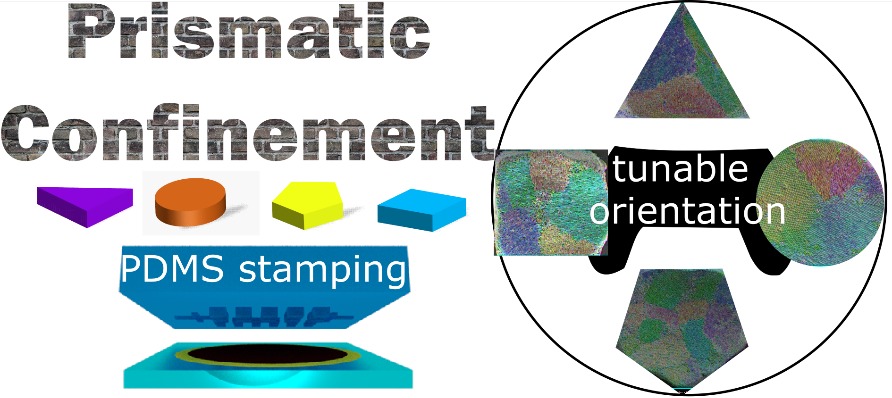Prismatic Confinement Induces Tunable Orientation in Plasmonic Supercrystals
 |
21/03/2024 Throughout history, scientists have looked to Nature for inspiration and attempted to replicate the intricate complex structures formed by self-assembly. In the context of synthetic supercrystals, achieving such complexity remains a challenge due to the highly symmetric nature of most nanoparticles (NPs). Previous works have shown intricate coupling between the self-assembly of NPs and confinement in templates such as emulsion droplets (spherical confinement) or tubes (cylindrical confinement). This study focuses on the interplay between anisotropic NP shape and tunable “prismatic confinement” leading to the self-assembly of supercrystals in cavities featuring polygonal cross-sections. A multiscale characterization strategy is employed to investigate the orientation and structure of the supercrystals, locally and at the ensemble level. Our findings highlight the role of the mold interface in guiding the growth of distinct crystal domains: each side of the mold directs the formation of a monodomain that extends until it encounters another, leading to the creation of grain boundaries. Computer simulations in smaller prismatic cavities were conducted to predict the effect of increased confinement. Comparison between prismatic confinement and cylindrical confinement shows that flat interfaces are key to orient the growth of supercrystals. This work shows a method of inducing orientation in plasmonic supercrystals and controlling their textural defects, thus offering insight into the design of functional metasurfaces and hierarchical structured devices. See article @ ACS Nano: DOI: 10.1021/acsnano.3c12799 |